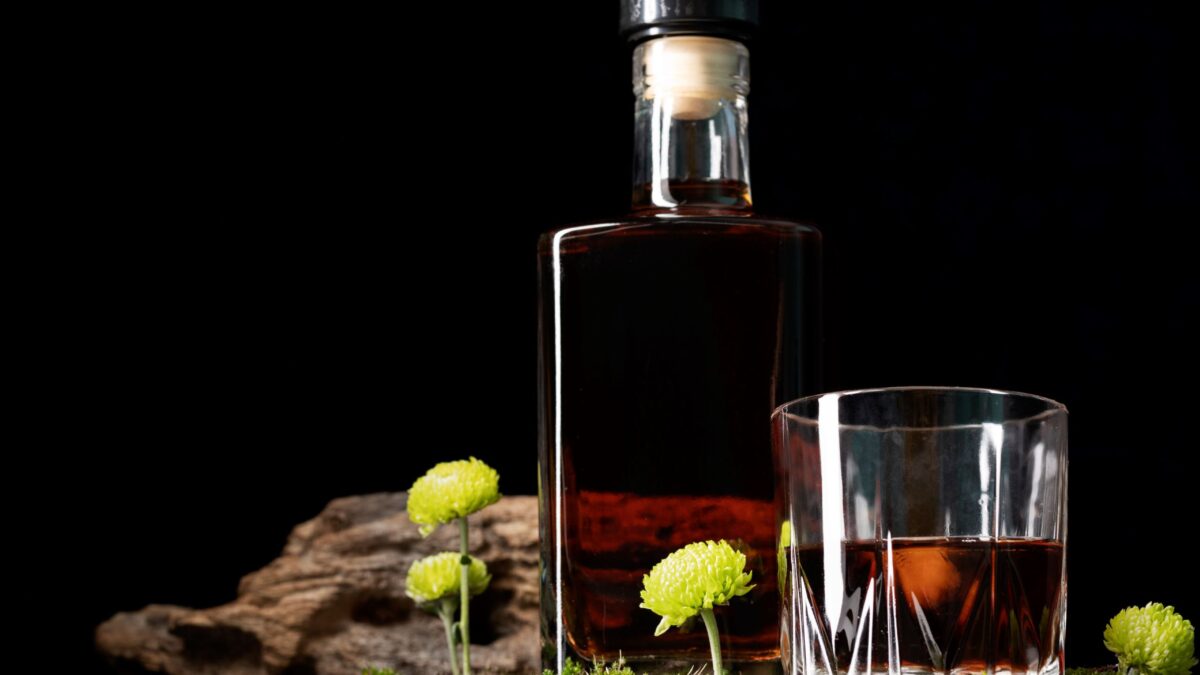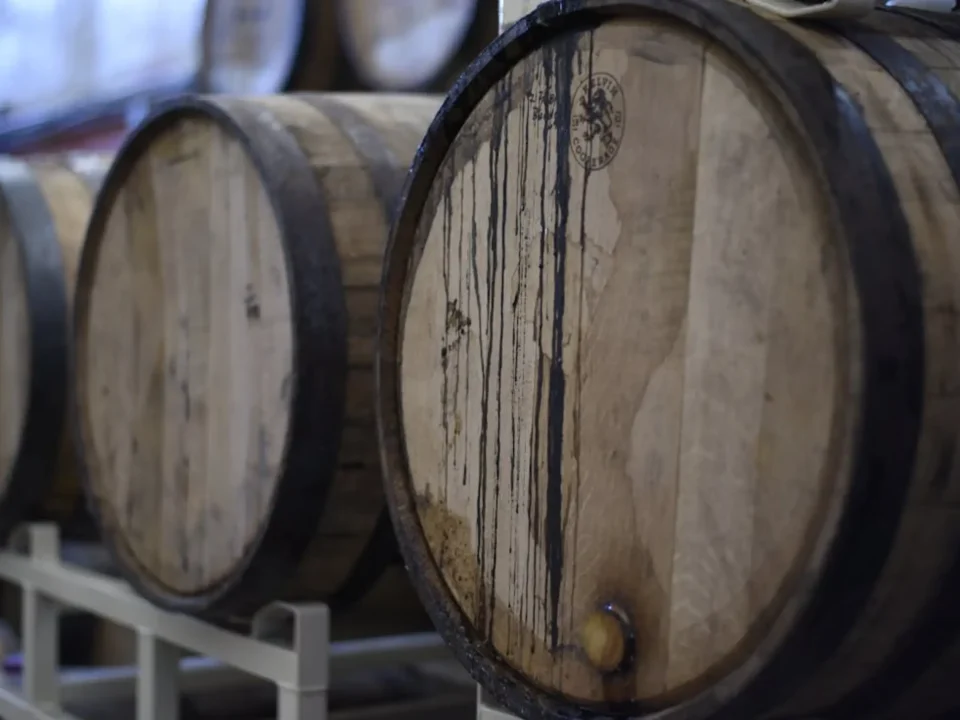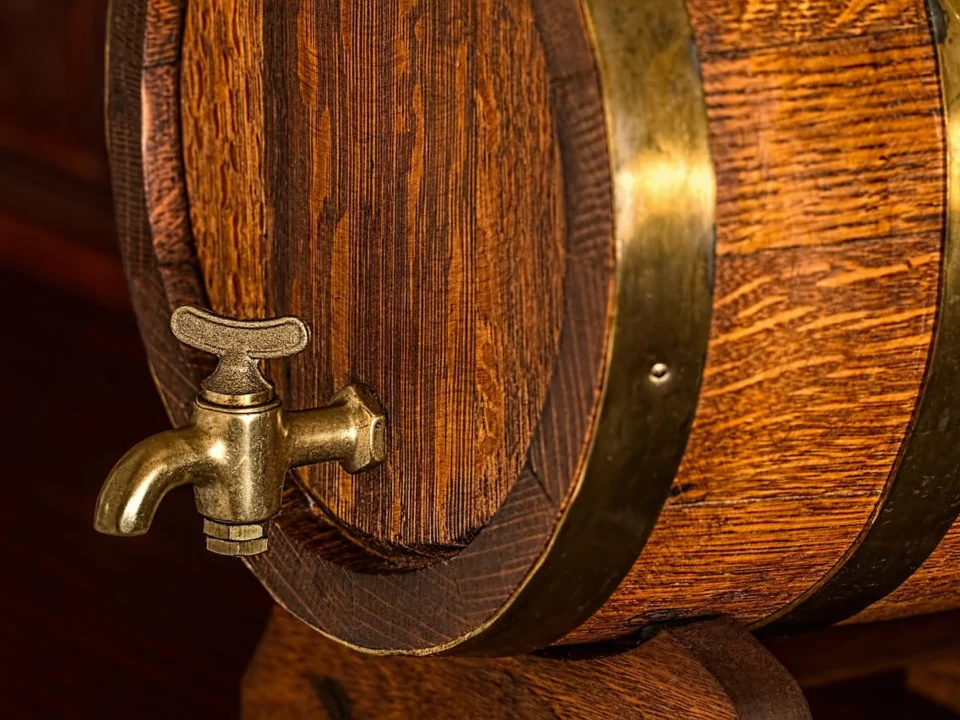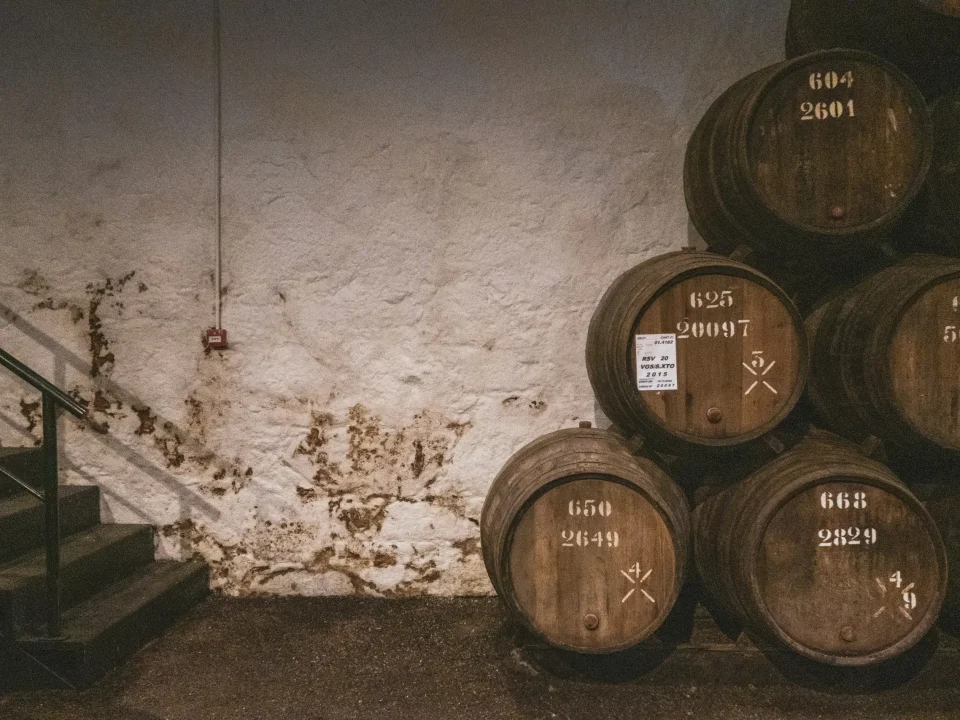
The Magic of the Barrel: How Whiskey Barrels Transform Spirits Over Time
March 6, 2024
Barrel Aging vs. Bottle Aging: What’s the Difference?
April 26, 2024Along with its moniker as the “elixir of life,” whiskey boasts an impressive pedigree spanning generations. One of the most critical variables in the unique flavor of this precious spirit is the type of barrels used for maturation. However, numerous additional factors influence how whiskey interacts with the wooden casks during the aging process, which can substantially affect its flavor profile. This blog delves into the intriguing realm of whiskey barrels and examines the impact that various varieties of barrels exert on the priceless spirit they contain.
Whiskey and Wood: A Love Story
The interaction between wood and whiskey is one of the most significant and complex partnerships in the world of whiskey alchemy. Distillers play a crucial role in maturation by carefully selecting the cask, as it determines the trajectory of the spirit’s flavor development. Oak barrels, with their porous composition, facilitate a dynamic chemical interaction between the whiskey and the wood, making them transformative vessels in the aging process.
Read more: Different Types of Wood Used in Making Oak Whiskey, Bourbon & Wine Barrels
The whiskey undergoes a gentle infusion of oak characteristics during the maturing process, resulting in a rich flavor and aroma tapestry. The wood adds lignins, tannins, and hemicellulose, among other substances, that leave their unique mark on the finished product. These reactions form chemicals such as lactones that give off coconut, woody notes, and vanillin, which gives off vanilla aromas.
Another critical factor is the charred interior of the barrels. Burnt barrels, which are especially common in bourbon production, give whiskey smoky undertones and caramelized sugars. Whiskey and oak combine to create a union that lays the groundwork for the wide range of tastes that enthusiasts enjoy in their glasses.
To get complete information about the whiskey and wood mixture, visit us at Rocky Mountain Barrel Company.
European versus American oak
A crucial option that significantly affects whiskey’s flavor profile is whether to use European or American wood for the barrels. American oak’s loose grain structure and tendency to add sweet and vanilla aromas to spirit make it a popular choice for bourbon production. The process of charring in American oak barrels amplifies this combination, contributing to bourbon’s distinct sweetness and richness.
Conversely, European wood, which is frequently used to mature Scotch whisky, has a distinct set of properties. The tighter grain structure of European oak results in a slower development of flavors in whiskey, emphasizing tannic, fruity, and spicy undertones. Additionally, if the barrels were previously used to age wine or sherry, the whiskey gains subtle levels of richness from the residual influences of these beverages.
It is not only a question of taste; the decision between American and European wood is firmly ingrained in custom and legal requirements. This crucial choice defines the whiskey’s character and creates the unique characteristics that fans all over the world like.
Size Is Important: Recognizing the Effect of Barrel Size
Dimensions of the bourbon barrel, an essential part of the whiskey maturation process, are a significant element that significantly affects the final product’s flavor. Miniature containers provide a greater surface area in contact with the liquid, speeding up the maturation process. This is in comparison to containers that are larger in size. The flavor profile is more powerful because of the rapid interaction between wood and whiskey. This is because the extraction of chemicals produced from wood occurs more quickly.
Larger barrels contribute to a slower aging process for whiskey, leading to a more balanced flavor profile. The extended maturation in larger barrels allows the spirit to develop a refined and nuanced character. Distillers often experiment with various barrel sizes to find the right balance between fermentation time and achieving the desired flavor in the finished product.
In addition to influencing the whiskey’s maturation rate, the cask’s dimensions also impact the intermolecular interactions among its constituent compounds. Distillers utilize barrel size to craft whiskey that aligns with their artistic vision, whether by capturing the delicate, harmonious tones of larger casks or extracting the robust, concentrated flavors from smaller barrels.
For complete knowledge about barrel types and sizes, contact us at Rocky Mountain Barrel Company.
Barrels Types: A Harmony of Taste and Wood
- American Oak Barrels
The predominant source of American oak, which is a popular option for bourbon development, is the Quercus alba species. These barrels’ tight grain and high vanillin content contribute to the sweetness and vanilla notes typical of bourbon. The charred American oak barrels contribute to the spirit’s color, flavor, and aroma by accelerating chemical reactions throughout development.
- European Oak Barrels
European spirits, like Scotch bourbon, are often made from European oak, usually Quercus robur or Quercus petraea. European oak differs significantly from American oak because it often has a more porous grain and a higher tannin content. As a result, the bourbon has a unique flavor profile with greater surface area, dried regular components, and flavors. If you are looking for buffalo trace barrel for aging sprits, you may contact Rocky Mountain Barrel Company.
- Wine Barrels
Repurposed wine barrels, often obtained from renowned wineries, add further nuance to bourbon. The residual wine that the oak holds onto adds fruity and vinous undertones that accentuate the distinct tastes of the whiskey. Mainly, ruddy wine barrels can impart berry-like flavors.
- Port Casks
Portuguese oak harbor barrels, which have previously contained harbor wine, are highly valued for their ability to impart rich, fruity, and occasionally spicy aromas to bourbon. Premium and limited-edition whiskies are regularly aged in barrels of this type.
- Bourbon Barrels
The unfinished, charred American oak barrels used to make bourbon are essential to the maturation process. The guidelines for making bourbon control the use of contemporary barrels, which leads to the availability of used barrels for various bourbon varieties. These casks add notes of wood, caramel, and toffee. Read more: Understanding Oak Barrel Maturation
Advancements and Experiments
Distillers in the whiskey industry are constantly testing the limits, challenging the status quo, and developing innovative flavor characteristics. Here, the standard has been defined by experiments with different barrel types and treatments, giving experts a taste of the odds while the field evolves.
Distilleries are exploring a diverse range of barrel types, including rum barrels, wine barrels, and those crafted from exotic wood varieties. These unconventional choices offer unique flavors, allowing whisky enthusiasts to broaden their palates and challenge preconceived notions about the traditional profile of the spirit. The experimentation with different barrel types adds an exciting dimension to the world of whisky.
Distillers looking to fine-tune taste characteristics increasingly use toasted staves and inventive charring processes in addition to barrel selection. These techniques provide a more regulated extraction of particular components, allowing distillers to customize the whiskey’s qualities to fulfill their artistic vision.
Although there may be initial skepticism towards such studies, they frequently lead to revolutionary advancements. The readiness to adopt novel approaches to the use of barrels indicates a dedication to the craft of whiskey production, guaranteeing that the beverage will keep developing and captivating the tastes of connoisseurs.
Regional Variations
Whiskey and wine share a fascinating resemblance to the notion of terroir. The ultimate flavor profile of a whiskey is greatly influenced by the local characteristics of the areas where it is matured and distilled. The aging location’s climate, humidity, and air quality give the whiskey distinct attributes.
For example, Kentucky’s humid climate—the home of bourbon production—increases the interaction between the whiskey and the barrel. Due to the accelerated maturation, bourbon frequently exhibits intense sweetness and rich, deep flavors. On the other hand, the marine climate of Islay, which is well-known for its peaty Scotch whiskies, gives the spirits a unique earthy and salty flavor.
The geographic origin of the water used in the whiskey-making process plays a crucial role in shaping the final product. The mineral content of the water source imparts significant nuances to the whiskey during fermentation and distillation. This interdependence between the whiskey within the barrel and its natural surroundings highlights the intricate interplay of nature and craftsmanship in the world of whiskey production. Read more: Why Are Wine Barrels Necessary for the Fermentation of Alcohol?
The Bottom Line
To sum up, the relationship between wood and whiskey, the selection between American and European oak, the effect of barrel size, risk-taking experiments, and the regional quirks that contribute layers of complexity are all factors in the intricate process of how barrel types affect whiskey flavor profiles. Let’s honor the skill and artistry that go into every drop of this liquid gold as we lift our glasses to enjoy its many flavors. Toast to the distillers of whiskey and the casks that create our favorite drinks’ symphony of flavors!




